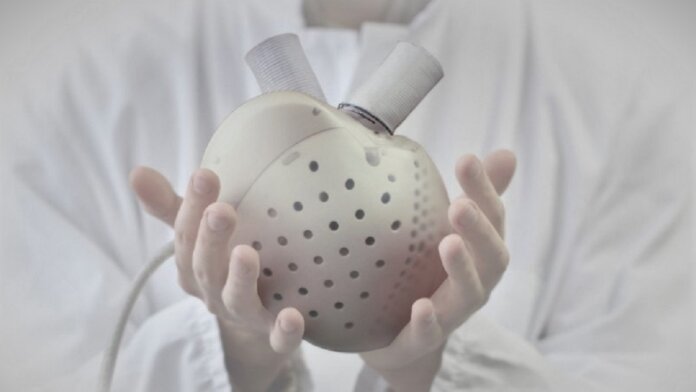Heart disease is one of the leading causes of death in the world, particularly in the US and Western Europe. Medical science has come up with some ingenious solutions to common heart problems, like pacemakers (which correct abnormal heart rhythms), stents (to hold clogged arteries open so blood can flow through), and bypass surgery (which implants a healthy blood vessel from another part of the body to redirect blood around a blocked artery in the heart). These procedures have saved and extended the lives of millions of people.
Now there’s another solution for cardiac patients, and this one goes beyond fixing just an arrhythmia or single artery: a total artificial heart.
If you’re brimming with questions, like—How does it work? Wouldn’t the body reject such a large foreign object (and in such a crucial place?)? What keeps it running?—you’re not the only one.
The artificial heart is made by a French company called Carmat, and is designed for people with end-stage biventricular heart failure. That’s when both of the heart’s ventricles—chambers near the bottom of the heart that pull in and push out blood between the lungs and the rest of the body—are too weak to carry out their function.
Like a real heart, the artificial heart has two ventricles. One is for hydraulic fluid and the other for blood, and a membrane separates the two. The blood-facing side of the membrane is made of tissue from a cow’s heart. A motorized pump moves hydraulic fluid in and out of the ventricles, and that fluid moves the membrane to let blood flow through. There are four “biological” valves, thus called because they’re also made from cow heart tissue.
Embedded electronics, microprocessors, and sensors automatically regulate responses to the patient’s activity; if, for example, they’re exercising, blood flow will increase, just as it would with a real heart. This is what differentiates Carmat’s product from the artificial heart made by American company SynCardia; theirs is a fixed rate device, meaning once a beat rate is set for the heart, the beats per minute will stay the same regardless of patient activity.
Carmat’s device weighs 900 grams, or just under 2 pounds. This is about three times the weight of the average human heart. Externally, patients carry a small bag of actuator fluid, a controller, and a lithium-ion battery.
“The idea behind this heart, which was born nearly 30 years ago, was to create a device which would replace heart transplants, a device that works physiologically like a human heart, one that’s pulsating, self-regulated and compatible with blood,” Carmat CEO Stéphane Piat reportedly told Reuters.
At present, however, Carmat’s product isn’t a permanent solution; it’s been approved as a temporary replacement while patients wait for donor hearts, and is estimated to last about five years. In November 2020, Carmat reported that one patient had been living with the implanted heart for a record two years.
Scientists have long been working on re-creating working versions of human organs using synthetic materials. One of the organs most sorely needed is the kidney, and it’s also one of the hardest to re-create. In comparison, perhaps surprisingly, the heart is one of the less complicated organs; it doesn’t have the hundreds of thousands of intricately-structured nephrons of kidneys, nor the complex insulin-monitoring function of the pancreas; it’s really just a little pump to push blood through our bodies.
After receiving the CE marking (a sort of stamp for products sold in Europe to indicate conformity with health and safety standards) in late 2020, Carmat’s artificial heart will launch commercially in Germany and France in the second quarter of this year. The company also got approval from the US Food & Drug Administration to start an Early Feasibility Study in the US this year.
Image Credit: Carmat



